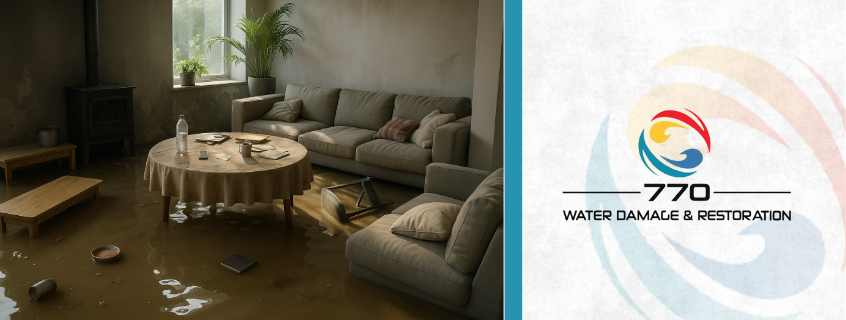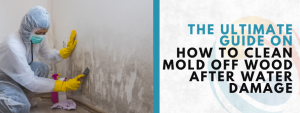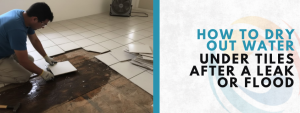
Imagine walking into your home after a long day and suddenly hearing a drip-drip-drip sound from your ceiling. Or feeling a cold draft even though all your windows are closed. These problems don’t happen out of nowhere—they often grow slowly over time. One of the biggest reasons? Skipping seasonal home maintenance.
Many homeowners believe they’re saving time or money by putting off those “little tasks” like checking gutters or sealing windows. But ignoring these things can cost you much more in the long run. This blog uncovers the real costs of neglecting seasonal home maintenance, from money to comfort, and even your home’s safety.
Seasonal maintenance may feel like a chore, but it’s a shield against expensive damage. And by the end of this post, you’ll clearly understand how to protect your home, wallet, and peace of mind.
Why Ignoring Seasonal Maintenance Is So Expensive
The first and most obvious reason to care about seasonal maintenance is money. When you skip basic upkeep, small issues snowball into massive, costly repairs.
Let’s break this down:
- Roof leaks caused by clogged gutters can lead to moldy insulation and water-damaged ceilings.
- Cracked caulking around windows and doors means higher energy bills because warm or cool air escapes.
- Untrimmed trees can fall on your roof or power lines during a storm.
All of these are examples of the costs of neglecting seasonal home maintenance. And most of them are easily preventable.
| Problem | What Was Neglected | Repair Cost Estimate |
| Burst pipes in winter | Didn’t insulate outdoor plumbing | $5,000 – $10,000 |
| Mold in the attic | Didn’t fix roof leaks | $2,000 – $6,000 |
| Higher energy bills | Skipped sealing and insulation | $300/year or more |
| Basement flooding | Gutter cleaning ignored | $3,000 – $20,000 |
These aren’t exaggerations—they’re real expenses that thousands of homeowners deal with each year because they overlooked seasonal checks.
Common Mistakes and What They Can Lead To
Let’s look at the most common mistakes homeowners make when they skip seasonal tasks—and what these slip-ups can lead to.
Mistake #1: Not cleaning your gutters
- Water backs up and overflows, damaging siding and foundation.
- In winter, it forms ice dams, which cause roof leaks.
Mistake #2: Ignoring HVAC filters
- Dust and allergens build up.
- The system works harder, increasing bills and reducing lifespan.
Mistake #3: Not checking windows for drafts
- Heating and cooling systems work overtime.
- Rooms feel uncomfortable, no matter the season.
Mistake #4: Not trimming trees or shrubs
- Branches can break windows or block emergency exits.
- Overgrowth invites pests closer to your house.
In each of these cases, the costs of neglecting seasonal home maintenance grow far beyond the few hours or dollars needed to prevent them.
Seasonal Maintenance Checklist to Avoid Big Expenses
To avoid the surprise costs of neglecting seasonal home maintenance, it helps to follow a year-round checklist. Here’s one you can use, broken down by season:
Spring
- Clean gutters and downspouts
- Inspect the roof for damage
- Service the AC unit
- Check for signs of pests
- Trim shrubs away from the house
Summer
- Seal cracks in the driveway or walkways
- Test smoke and carbon monoxide detectors
- Inspect outdoor plumbing for leaks
- Repaint or reseal siding
- Power wash decks and exterior
Fall
- Clean the chimney and fireplace
- Check insulation in the attic
- Inspect and seal windows and doors
- Drain outdoor faucets
- Schedule a furnace check-up
Winter
- Monitor pipes to prevent freezing
- Keep gutters clear of snow and ice
- Check the roof after storms
- Test the sump pump
- Store outdoor tools safely
Following these steps helps reduce the overall costs of neglecting seasonal home maintenance, while keeping your home safe and efficient.
How Water Damage is One of the Most Expensive Outcomes
Water damage is one of the worst things that can happen when seasonal maintenance is forgotten. It can destroy drywall, warp floors, rot wood, and lead to mold growth. And it doesn’t take a flood to cause it—just a little neglected drip.
Imagine leaving your home for a weekend and coming back to find a burst pipe soaked the entire basement. You might think your homeowner’s insurance will cover it, but not all policies cover maintenance-related neglect.
Want to learn what to do if water damage strikes? Here’s a helpful resource that explains what to expect during a complete cleanup process.
Preventing water damage is one of the most compelling reasons to understand the costs of neglecting seasonal home maintenance. A leaky faucet might seem minor today, but the damage it causes in just a week could cost thousands.
Mold Growth: A Hidden Threat
Mold thrives in moist, dark, and undisturbed places. Skipping seasonal tasks like checking under sinks or in crawl spaces gives mold the perfect environment to grow. Once it spreads, mold is hard—and expensive—to remove.
Here’s what mold damage might mean for you:
- Constant musty smell in your home
- Health problems for kids or elderly relatives
- Decreased property value
- Costly remediation (often not covered by insurance)
The worst part? You may not even notice mold until it’s too late. Many homeowners who ignore small leaks or damp basements end up calling mold specialists months later, only to discover the full costs of neglecting seasonal home maintenance firsthand.
If you suspect mold after a storm or pipe leak, acting fast is key. Learn how timely intervention makes all the difference by checking this guide to stopping water intrusion early.
Increased Utility Bills from Small Maintenance Oversights
Energy efficiency isn’t just about eco-friendliness—it’s about keeping your bills low. When you skip seasonal maintenance, your heating and cooling systems have to work harder.
Examples of what increases your bills:
- Clogged air filters
- Poor insulation
- Leaky ducts
- Drafty windows
- Loose door seals
According to Energy.gov, sealing air leaks and updating insulation can save you up to 15% on heating and cooling costs annually. That’s money right back in your pocket—and a direct reversal of the costs of neglecting seasonal home maintenance.
Ways to Keep Bills Down:
- Schedule annual HVAC service
- Replace filters every 3 months
- Use door draft stoppers
- Install weather stripping
- Add window insulation film
These upgrades are cheap, easy, and protect both your comfort and your wallet.
Foundation Cracks and Structural Issues
If seasonal maintenance is skipped long enough, even your home’s bones can suffer. For example:
- Ignoring drainage leads to water pooling around the foundation.
- Poorly sealed windows let in moisture that seeps into walls.
- Overflowing gutters push water toward the basement walls.
When the ground around your home stays wet, it expands and contracts with the seasons. This causes foundation cracks over time, putting your entire house at risk.
The costs of neglecting seasonal home maintenance can rise sharply once structural repairs come into play:
- Foundation crack repair: $2,000 – $10,000
- Basement wall waterproofing: $3,000 – $15,000
- Total foundation replacement: $25,000+
Once the ground shifts or cracks widen, fixing them is far more expensive than simply cleaning gutters or grading your yard properly. This is why even outdoor maintenance tasks matter more than many realize.
Insurance Might Not Help You
You might think insurance is your safety net. But here’s the catch: most insurance companies won’t cover damage that could have been prevented with basic upkeep.
That means:
- A burst pipe in an unheated basement? Likely not covered.
- Mold caused by a slow leak you ignored? Probably denied.
- Roof damage from clogged gutters? Prepare to pay out of pocket.
It’s a hard truth, but the costs of neglecting seasonal home maintenance can hit you twice—once with repairs, and again when insurance says no.
To make sure you’re protected, always read the fine print on your homeowner’s policy. Most require “reasonable care and maintenance” of the home. Failing to do so could leave you without coverage when you need it most.
The Emotional Toll No One Talks About
Money isn’t the only thing you lose when home problems pile up. There’s also stress, time lost from work, and the emotional strain of dealing with home repairs.
Imagine these situations:
- You’re hosting family over the holidays, and your heater breaks down.
- You come home to a flooded laundry room and have to move into a hotel.
- Your kids can’t play in the basement anymore because of the mold.
These are the quiet but heavy costs of neglecting seasonal home maintenance—the kind that linger even after the repairs are done.
A home should feel like a safe, cozy place. Taking seasonal upkeep seriously helps keep it that way.
Quick Homeowner Tips That Make a Huge Difference
If you’re feeling overwhelmed, remember: you don’t need to do everything in one day. Spreading out seasonal maintenance over the year makes it manageable.
Here are a few smart tips to stay on track:
- Set reminders in your phone for seasonal tasks
- Keep a simple home maintenance calendar
- Hire help for bigger jobs like roof inspection or HVAC service
- Take “before and after” photos to track improvements
- Reward yourself after finishing a maintenance task (it helps!)
The best part? Once these tasks become habit, you’ll feel more in control, your home will run more smoothly, and you’ll avoid the massive costs of neglecting seasonal home maintenance.
When to Call the Pros
Some maintenance jobs are great for a Saturday afternoon DIY session. Others need professionals, especially when it comes to water damage, mold, or major electrical work.
If you’ve already faced damage from past neglect, it’s not too late to fix things. Don’t wait until the problem spreads. Look for experts who know how to act fast and restore your home fully.
For example, if you’re dealing with water issues near the coast, you can get help from local experts who specialize in property restoration services in your area.
They’ll not only fix the damage—they’ll help you set up systems to prevent it in the future.
Final Thoughts: Prevent Now, Save Later
Your home is probably your biggest investment. And like any valuable thing, it needs regular care. Seasonal maintenance might seem small, but it holds back floods, cracks, breakdowns, and all the expensive repairs that follow.
Let’s recap what we’ve covered:
- The costs of neglecting seasonal home maintenance include repairs, utility bills, insurance issues, and emotional stress.
- Small tasks like cleaning gutters and sealing windows can prevent thousands in damage.
- A seasonal maintenance checklist keeps you on track.
- Calling professionals early can save your home and your budget.
Remember, your house is more than walls and a roof. It’s your family’s safe place. Take care of it a little at a time, and it will take care of you for years to come.
Frequently Asked Questions About Seasonal Home Maintenance
Why should I worry about seasonal home maintenance if everything seems fine right now?
Even if things look okay, hidden issues like small leaks or drafts can worsen over time. Preventive maintenance helps avoid costly repairs and keeps your home safe and efficient year-round.
What are the most expensive problems that can happen if I skip maintenance?
Neglecting tasks can lead to water damage, mold growth, and foundation cracks—all of which can cost thousands to fix. These are often not covered by insurance if deemed preventable.
How often should I check things like gutters or HVAC filters?
Gutters should be cleaned at least twice a year, and HVAC filters every 3 months. Regular checks keep your home systems working properly and avoid energy waste.






